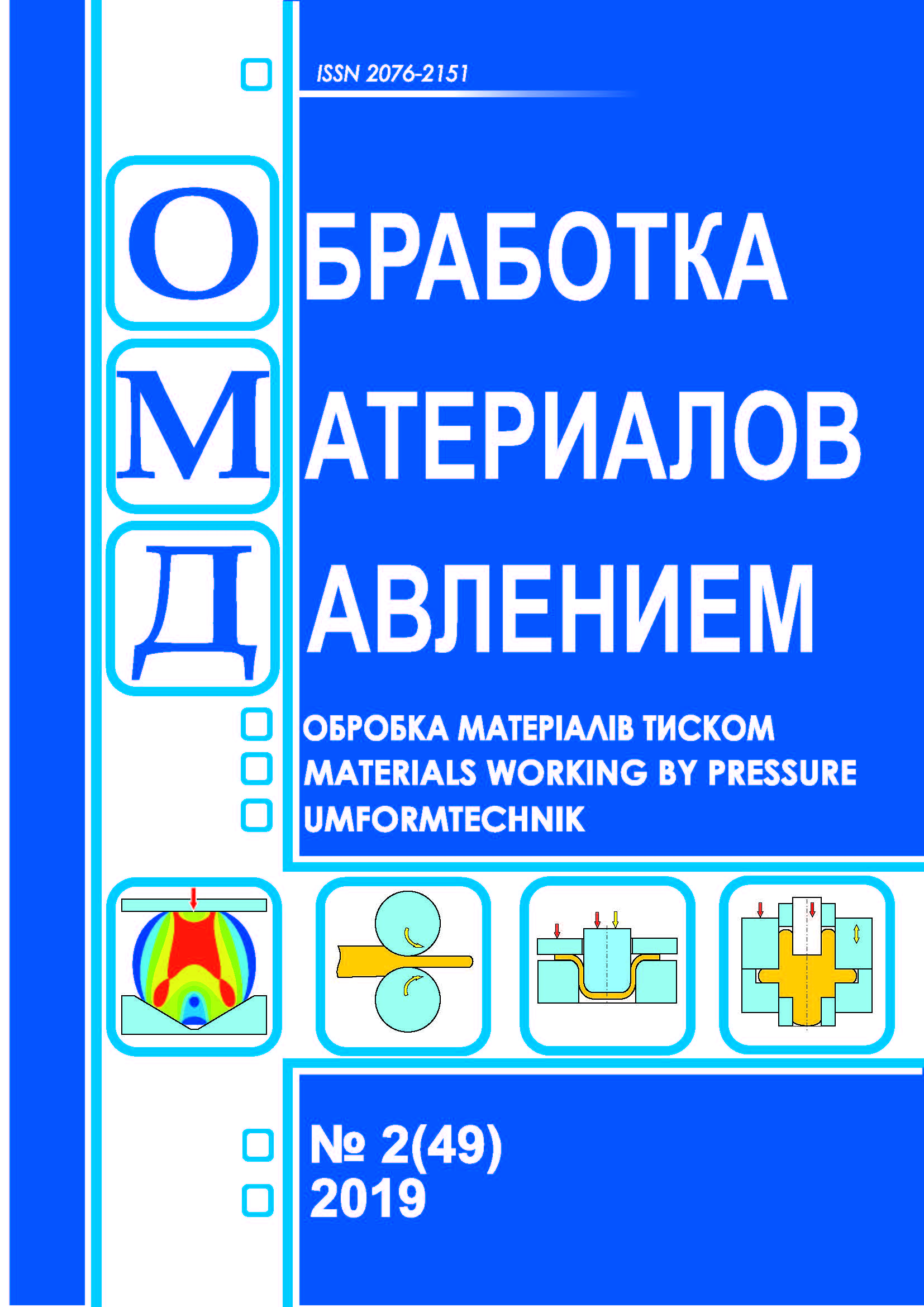Determining the physical and mechanical properties of metal powders for surfacing
DOI:
https://doi.org/10.37142/2076-2151/2019-2(49)169Keywords:
pressing; powder; powder tape; plasticity condition; closed die; stress-strain state; relative density; stress.Abstract
Gribkov E. P., Kassov V. D., Kovalenko A. K. Determining the physical and mechanical properties of metal powders for surfacing // Material working by pressure. – 2019. – № 2 (49). - С. 169-176.
For modeling the pressure treatment of powder materials, one of the main parameters is the description of the powder composition plastic properties. Despite the fact that plasticity coefficients for most powder compositions are known, the use of a large number of alloying additives in the composition of powder cores makes it relevant to conduct experimental studies to determine their physicomechanical properties. This paper presents the results of such studies for a chromium-based powder of the following composition: chromium – 50 %, aluminum – 15 %, cast tungsten carbide – 35 %. The experimental setup was a split closed matrix with a centering rod and two punches. The use of a split matrix made it possible to determine axial and radial stresses; the use of a centering rod made it possible to reduce the influence of shear stresses. In addition, the experimental setup was equipped with a digital linear displacement sensor, which using force cells to determine axial and radial stresses, as well as digital signal processing equipment, made it possible to obtain a complete picture of the dependences of stresses on the powder material relative density. Knowing the current value of the movement of the upper punch and the level of radial and axial stresses during the deformation of the workpiece made it possible to replace the series of experiments with one experiment. As a result of the obtained experimental data analysis, the dependences for the coefficients included in the plasticity condition for porous materials on the relative density were determined. Their values for the investigated material were determined. By statistical analysis, these dependencies were clarified, while the correlation coefficient amounted to about 0.99, which is 10 ... 14% higher than the known dependencies.
References
Faisal N.H., Ahmed R. Diametral compression test method to analyse relative surface stresses in thermally sprayed coated and uncoated circular disc specimens. Surface and Coatings Technology. 2019, 357, pp. 497-514. DOI: https://doi.org/10.1016/j.surfcoat.2018.10.053.
Prikhodko I.Y., Dedik M.A., Gogaev K.A. et al. Finite-element optimization of the asymmetric rolling process for titanium powder. Powder Metallurgy and Metal Ceramics. 2016, 55, 1-2, pp. 12-18. DOI: https://doi.org/10.1007/s11106-016-9774-3
Keshavarz Sh., Khoei A.R., Molaeinia Z. Genetic algorithm-based numerical optimization of powder compaction process with temperature-dependent cap plasticity model. The International Journal of Advanced Manufacturing Technology. 2013, 64(5-8), pp. 1057–1072. DOI: https://doi.org/10.1007/s00170-012-4053-z.
Tseng H-C., Hung C., Huang C C. An analysis of the formability of aluminum/copper clad metals with different thicknesses by the finite element method and experiment. The International Journal of Advanced Manufacturing Technology. 2010, 48(9 12), pp. 1029–1036. DOI: https://doi.org/10.1007/s00170-009-2446-4.
Wang X., Hua L. , Han X., Wang X., et al. Numerical simulation and experimental study on geometry variations and process control method of vertical hot ring rolling. The International Journal of Advanced Manufacturing Technology. 2014, 73(1-4). pp. 389–398. DOI: https://doi.org/10.1007/s00170-014-5770-2.
Volkogon G.M., Dmitriev A.M., Dobryakov E.P., et al. Progressive technological processes of stamping parts from powders and equipment. Eds. Dmitriev A.M. Ovchinnikov A.G. Moscow: Mechanical Engineering. 1991, 320 p. (in Russian).
Berezin I.M. Creation of an experimental setup for hydrostatic compression of porous materials. Bulletin of PNIPU. Mechanics. 2013, 2, pp. 37-51. (in Russian).

